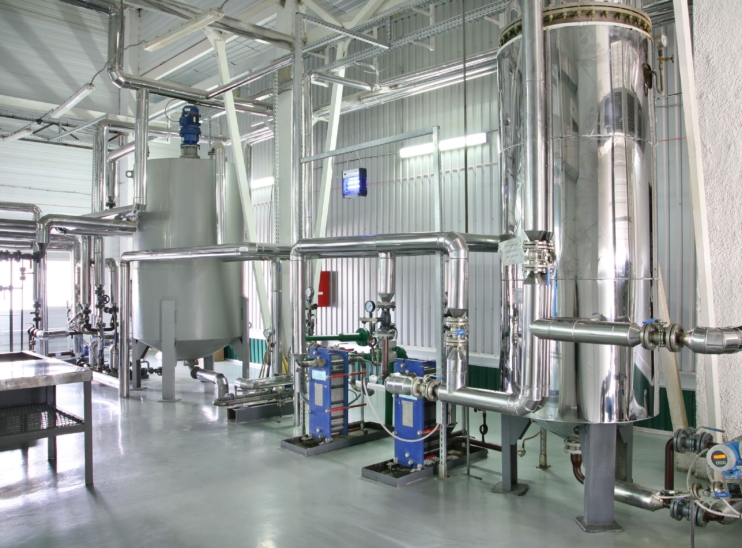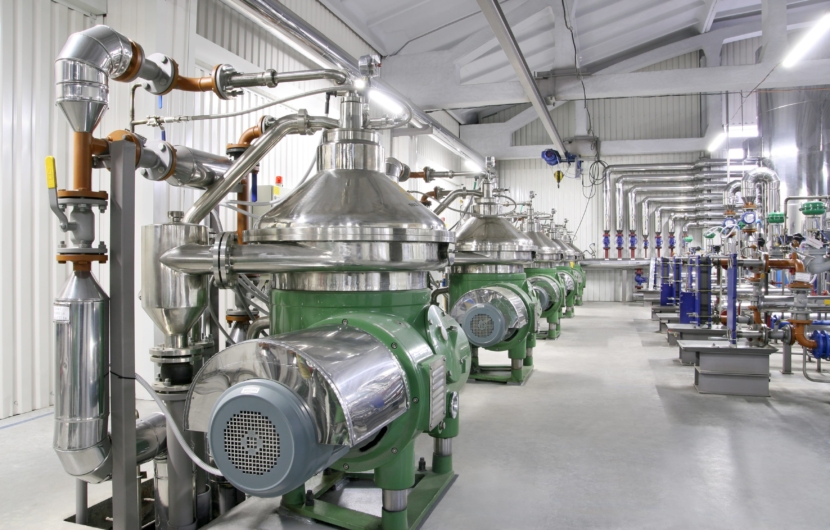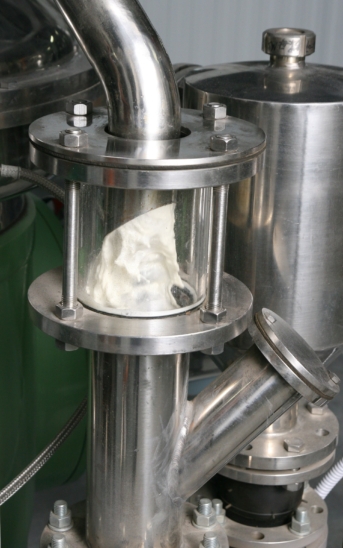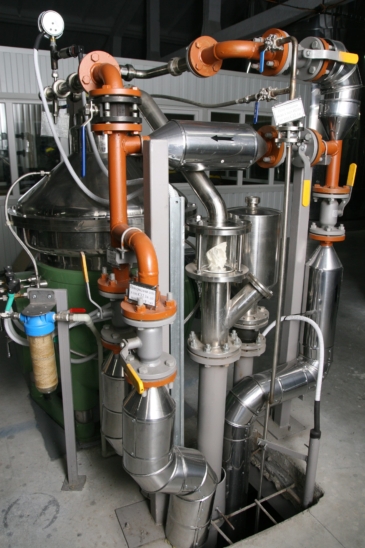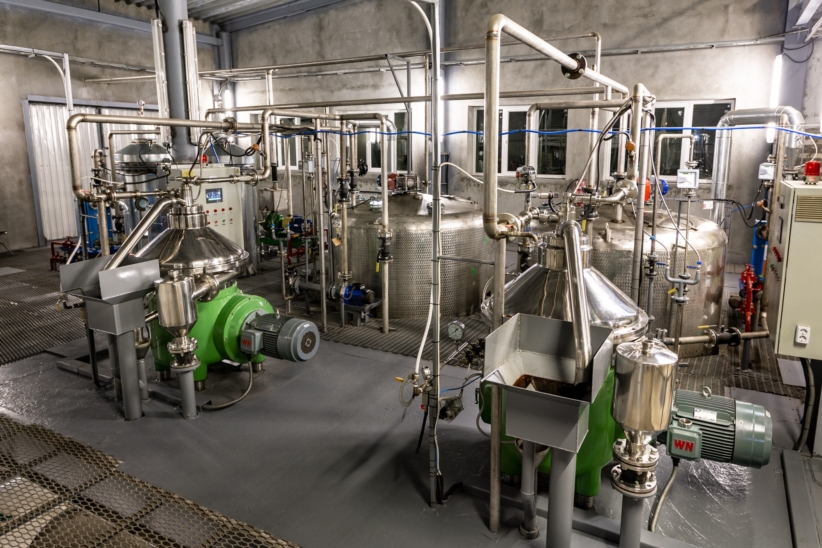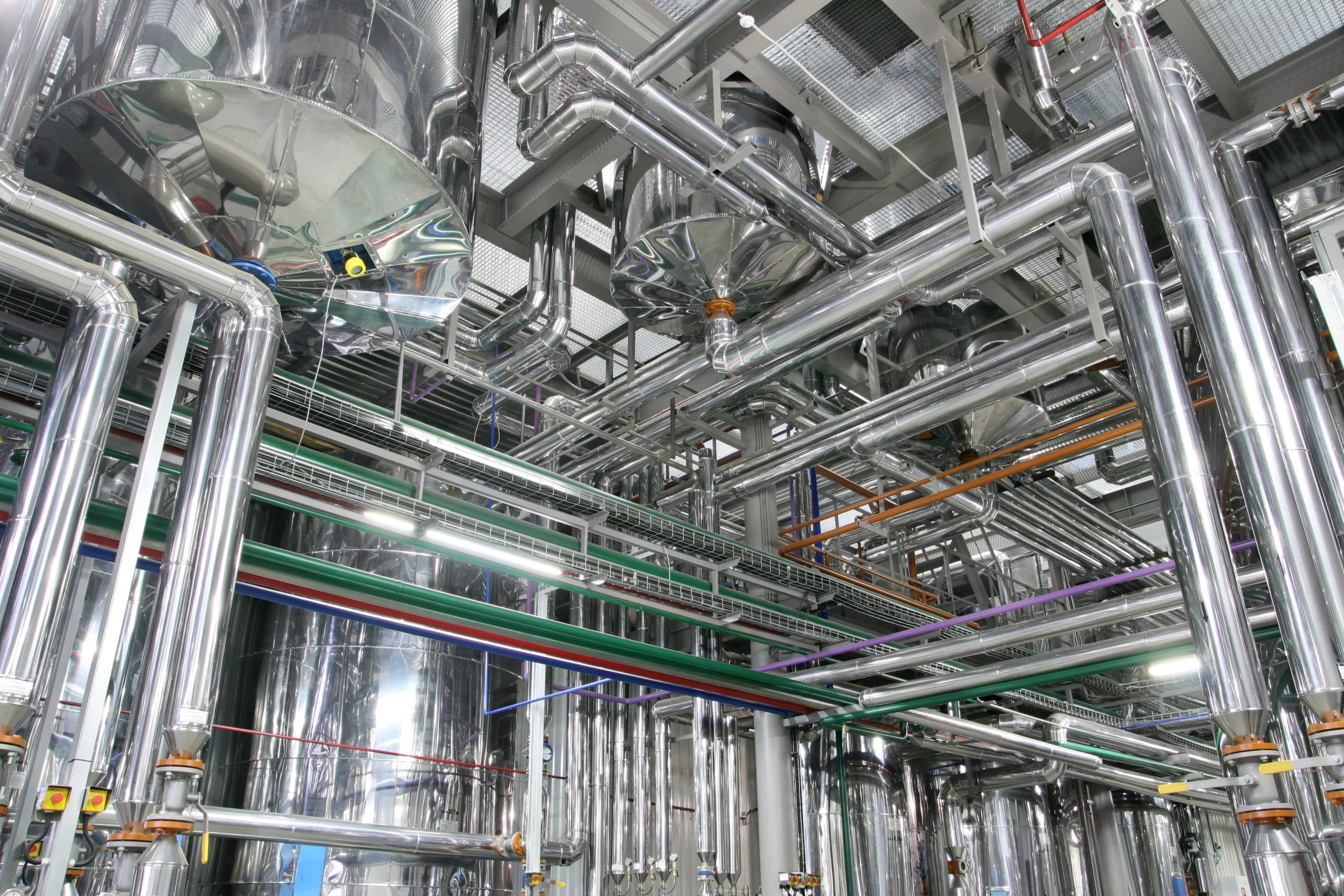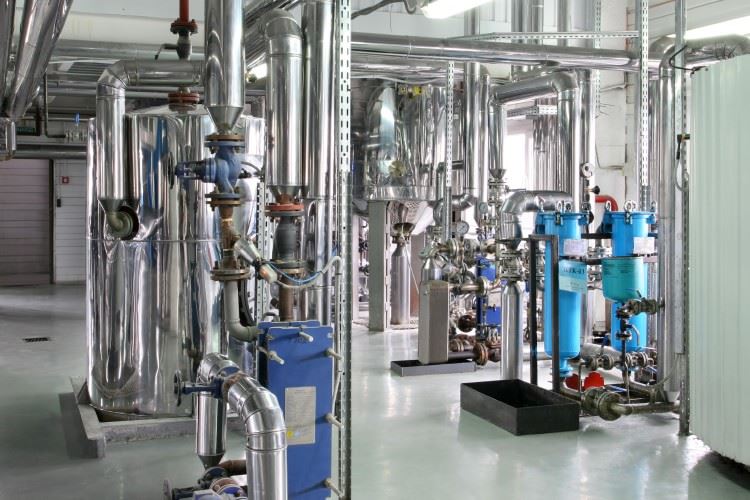Degumming and neutralization line
Description of the technological line
Degumming and neutralization lines are designed for purification of vegetable oils from phosphorus-containing substances and other hydrophilic impurities, neutralization of free fatty acids, as well as washing out soap from oil and formation of soap stock.
The principle of operation of degumming and neutralization lines
- Degumming section.
The oil is pumped from tank through heat exchanger, where it is heated to the required temperature.
Orthophosphoric acid is added to the heated oil, after which they are intensively mixed in a separate blade mixer of the dynamic type. In the process of mixing, phosphorus-containing substances become hydratable. The reaction takes place in the tank for a certain period of time.
- Neutralization section.
The first stage of neutralization is feeding of an acid solution into the oil. After that, the vegetable oil is pumped through 2 heat exchangers, where it is cooled with oil and water to the required temperature. In these heat exchangers, reduction of saponification of neutral oil is performed. Alkali solution is added to the cooled oil, which helps to neutralize orthophosphoric acid and fatty acids. Softened water is then supplied for the further degumming process. In a dynamic knife mixer, intensive mixing of water and oil is performed. For further conditioning, the oil is pumped into the tank of conditioning.
After the conditioning process, oil is pumped from the tank through 2 heat exchangers where the vegetable oil is heated to the temperature required for separation and enters a self-discharging separator, in which the oil is cleaned of soapstock and gums (hydration sludge). They, together with other low-fat impurities, are separated into the tank, and the oil goes to further washing. The soapstock from the container is removed with the help of a pump into the outdoor tank.
- Washing section.
The cold softened water required for the operation of the separator valves is supplied from the tank directly to the separator valves.
The neutralized oil enters the heat exchanger and is heated to the required temperature with the help of low-pressure steam. In the static mixer, heated vegetable oil is mixed with hot softened water. The mixture of oil and water enters the separator, where they are separated. From there, the water containing fats goes to the grease catcher, and the oil goes for further processing.

